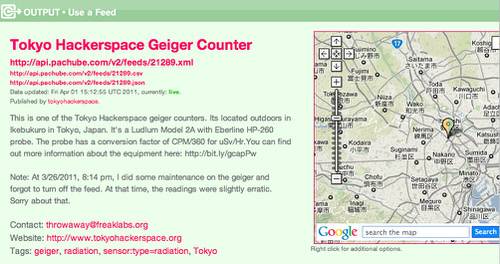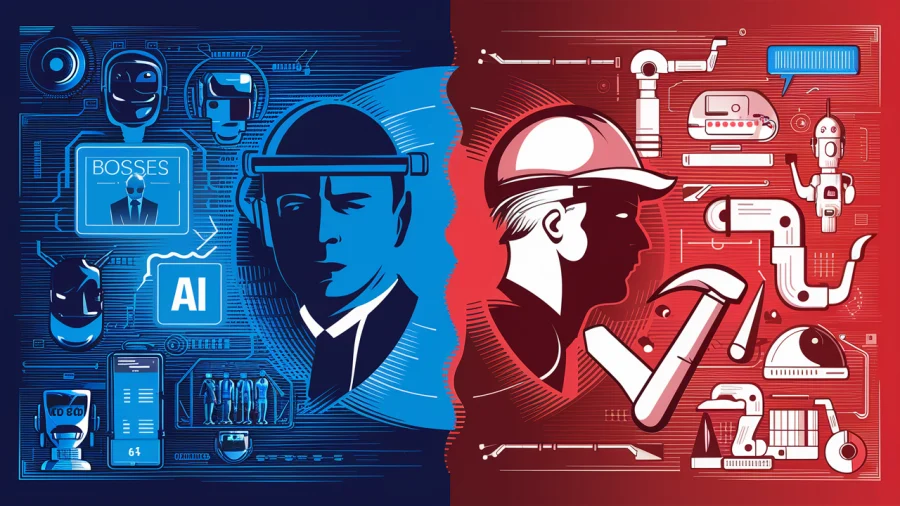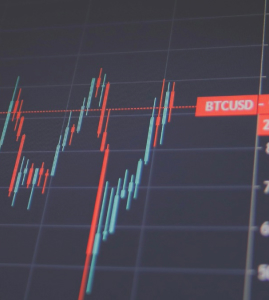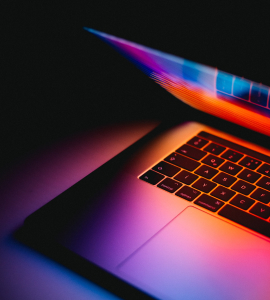The need to just do something is a real reason people aggregate data from real-time sensors, create maps and share their findings online. Crowdsourcing is a manifestation of that desire to contribute in a way that helps us understand and better define the overwhelming amount of data available.

In Japan, crowdsourcing is emerging as a way for people to keep track of the radiation levels around the country, levels that are spiking at times due to the pollution escaping from the Fukushima nuclear power plant.
Pachube is being used to monitor Geiger counters across Japan.

Data from Pachube and other sensor networks is being aggregated into various forms.
Marian Steinbach, a data visualization specialist, has provided a collection of open data sources related to radiation in Japan. Steinbach wrote a scraper for the SPEEDI radiation dose data that is a continuously updated CSV download. SPEEDI stands for “System for Prediction of Environment Emergency Dose Informatio,” From that data he has created a real-time video of radiation levels.
The toughest part is understanding what the data means. Haiyan of Failed Robot created a map based upon Pachube data. He explained the issue this way:
The toughest part of this visualisation is really understanding what the numbers mean and what impact they have on human health. The first step to this process is standardising the units of measurement, as the crowd-sourced measurements and visualisations may use a number of representations. Units here are in µSv/h (or microSieverts) and we’ve been hearing CNN and NHK World refer to the unit Milisieverts (1 miliSievert = 1000 microSieverts). I also urge other mappers out there to use the µSv/h unit, so we speak a common language.

The Internet of Things is a powerful way to collect radiation data and visualize it. The challenge over our lifetimes will be in interpreting this type of data so we can really understand what it means and what we should do about it when disasters strike.
Lead image: Associated Press

















